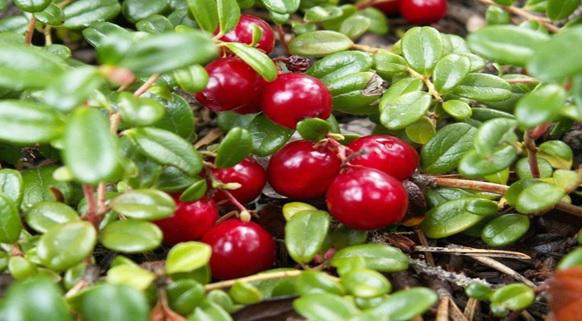THE ARCHAEOLOGY OF CRANBERRY (KIREN)
Melatonin, known as a powerful antioxidant of darkness, is found in cranberry (cornaceae, cornus mas) which is a famous fruit for its late development by absorbing the sunlight for many years. Cranberry, known as ‘kiren’ or ‘zoğal’ in some regions of Anatolia, has an increasing effect in human blood and this is because it absorbs the wisdom light from the sun and it transfer it to human body as a rhythm regulator.
The fact that cranberry tree grows late is a subject to our folklore with the ballad starting as English “Have the cranberries grown ripe? Did they fill the baskets?“ Cranberry is known as “i-li-a-nu-um” in Sumerian and the famous oracle Teiresias from Thebai used to allocate the directions and combat. The branch of the cranberry used to be used as a weapon because of the shark fruit and known as “dogtree” in English (1550), later, it become “dag-berry” (1630) because dagger-like weapons that can pierce even the ground used be made though it was very flexible.
In 333 B.C, when Alexander the Great came to the Gordion, the capital of Phrygia, a knot, that was said that whoever untie it would conquer the world, was made of a branch of a cranberry tree. In some regions, “tarhana” made from cranberry with sour flavor is named as “the remedy soup” because it is a cure for common cold.
Melatonin, which can also be taken from cranberry, which was also famous in antique eras and it has more vitamin C than orange and is the enemy of the viruses, can be generated from pineal body by blood. It regulates the biological clock in the eye by effecting the spine and PVN (Paraventricular Nucleus) and stimulating SCG (Superior Cervical Ganglion).
The red dashed line represents the eye-pineal neural pathway in the brain image. Sleep is defined as reestablishing the melatonin excreted by the pineal body in the brains of the vertebrates whose balance is spoiled by being exposed to the sunlight excessively. Circadian rhythm disorders, known as mood swings (social interactions, sleeplessness, anger etc.) at different hours of the day, and sleep mode are excreted by the pineal body, known as the third eye of human, with the melatonin which is the antioxidant in the human body. The active neurons in the SCN (The Suprachiasmatic Nucleus) part in the brain, do an excreting that regulates the circadian rhythm in the human body. We sleep because of this and body reacts differently in different time, which is called as circadian time.
On 16th of March, a group of scientists from University of California explained how “cyanobacteria”[1] molecules, known as spirulina that regulate the circadian time in the human body, affect one another. The scientists, who explained that these molecules consist of only 3 proteins, managed to view the glimpse of the molecules with nuclear magnetic resonance spectroscopy. These molecules, that are said to be working in synchronization with the rotation of the earth, help us to wake up in the morning and sleep at night by following the genetic, epigenetic and metabolic activities in the body and they are foreseen to be evaluated in the totality of the body like the mechanical harmony of a Swiss watch whose every piece work.
The synchronization of circadian molecules with the rotation of the earth is resulted from the harmonics of Schumann frequency effects which is the electrical energy that is generated by the sun or atmospheric events that emerges as 7.8, 14.3, 20.8, 27.3 and 33.8 Hertz on the circadian time and especially the human body. It is clear that the theta frequency, which is the first of the frequencies that makes humans sleep are the harmonics that are at 7-8 Hertz values and determines the state between the sleep and wakefulness, is at the range of the frequency that can be obtained by dividing the light velocity into the circumference of the earth. (Velocity of light= 300.000 km/sec / 40.000 km= 7.5 Hertz)
The scientists that are named as circadian biologists continue to do experiments to find out the effects of the 3 different proteins in the molecules that they define as KaiA, KaiB and KaiC at different hours of the days and behaviors at night.
On a 4000-year-old archaeological site [2] situated in Kültepe Hill Town (Kayseri/Turkey), a merchant’s brain was treated successfully and trepanation, dating back to 10.000 B.C and a kind of operation by taking a bone from the skull, was detected as a first operation on human brain. Like other brain-friendly vitamins [3], fruits like blueberry, grape that protects the cerebral cortex and cranberry which is an antioxidant fruit full of circadian rhythm resource melatonin was specified and used by Dioscorides Pedanius (40-90 A.D), who is a pharmacologist from Rome, that wrote the first book of Anatolian [4] doctor botany.
ARKEOTEKNO
REFERENCES
[1] “Kyanos” means blue in Greek and it is defined as a bacteria branch which gets its energy photosynthetically. Kyano also means the bacteria that pollutes the aquarium when carbon, water and light combine.
[2] http://www.haberturk.com/saglik/haber/535246-dort-bin-yil-once-beyin-ameliyati-yapilmis
[3] Other vitamins: L-theanine, tryptophan, phosphatidylserine, catechin, b12 vitamin, folic acid, lecithin, omega 3-6, gingko biloba, oxygen and iron.
[4] In the region of Cilicia, Anavarza,Turkey



Sayfa Yorumları (0)
Yorum Bırakın